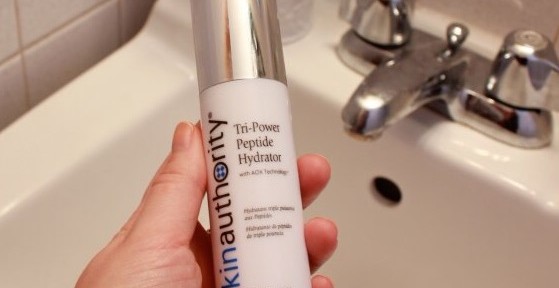You probably have heard about peptides in skin care and wondered what they are and if they actually work or not. Peptides are key fighters in your anti-aging routine. They are a part of the strength training portion of your BeautyWorkoutTM. Read on to find out why this skin care trend is here to stay and how you can incorporate the best peptides into your own skin care routine.
What are they?
Peptides are chains of amino acids in the body. They help improve inter-cell communication, which leads to improved function of healthy skin structure. Because peptides have a tiny molecular structure, they easily penetrate into the deeper layers of the skin.
Why are they important?
Different peptides have different sizes and strengths, which have diverse effects on the skin. Peptides with longer chains and more amino acids are more powerful and will be more beneficial to your skin. They can brighten your skin tone, reduce lines and wrinkles, accelerate cell turnover, maintain moisture balance, increase collagen and hyaluronic acid production, increase the thickness of the epidermis, and decrease inflammation. Oligopeptide-34 in particular decreases melanin synthesis for lightening and brightening effects on your skin that studies showed to be superior to the brightening effects of both Vitamin C and Arbutin.
Another major benefit of peptides is that they communicate to skin cells that they need to produce more collagen. When you topically apply peptides, the skin interprets that they are broken down collagen and signals to the body to produce more collagen to replace it. This is because collagen and peptides are both made up of chains of amino acids, although collagen is made of longer, stronger chains linked together by peptide bonds. Peptides, whether naturally occurring or topically applied, play an important role in restoring lost collagen and ensuring the body continues to produce more.
How do peptides affect my products?
In a previous post, we discussed how applying collagen to your skin will not actually cause your skin to produce more collagen. However, peptides are a whole different story. Applying peptides topically actually allows you to affect the biological structure of your skin to improve function and health, instead of just covering up an underlying problem. Because peptides have a much smaller molecular structure, they are able to penetrate to the deeper layers of your skin. Typically, you will not see results until 4-8 weeks after you start using peptide products, depending on your age and cell turnover cycle. While continuing to use peptide products, you will continue to see results, however if you discontinue use, the results will eventually diminish over time.
What to look for
Incorporating peptides in skin care products allow you to target specific benefits, such as brightening tone and wrinkle reduction, without undesirable side effects. Look for stronger, longer peptides included in your products to see more of a benefit. Tri-peptide complexes (containing three separate peptides) have replaced copper peptides based on their proven clinical effectiveness. You want all three peptides to have long chains five or more. You can identify how long the chain is by the prefix of the peptide (penta-, hexa-, hepta-, octa-, etc.).
Tip from your Skin Authority Skin Coach: Try the Skin Authority Tri-Power Peptide Hydrator. Tri-Power Peptide is not the same as tripeptide. Tripeptide is a chain of three peptides and is actually quite weak. The Tri-Power Peptide Hydrator includes three very powerful peptide chains, including hexapeptide-8, tetrapeptide-7, and oligopeptide at low pH help firm, tone, smooth, lift, and brighten.

